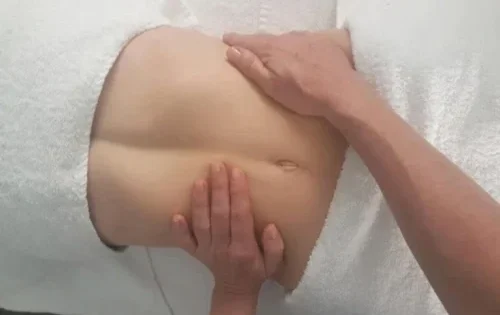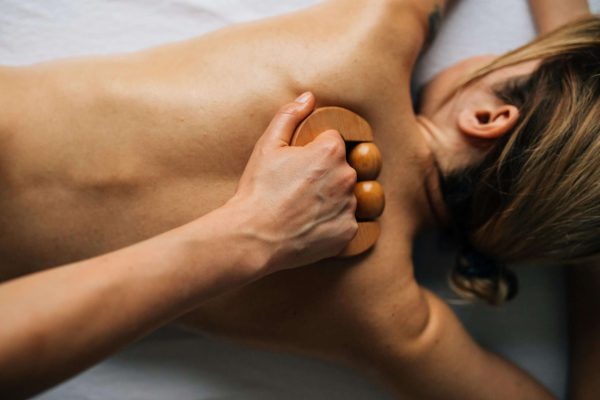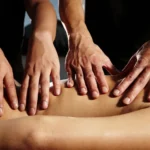Have you ever considered your belly button as a gateway to better health? Rooted in Ayurvedic and traditional healing practices, belly button massage is gaining modern attention for its potential to support digestion, circulation, and relaxation. This gentle yet powerful technique stimulates nerve endings and improves oxygen flow to the abdomen—offering benefits from reduced bloating to improved mood. In this guide, you’ll learn the science-backed benefits of belly button massage and how to practice it safely at home.
Table of Contents
Benefits of Massaging Your Belly Button
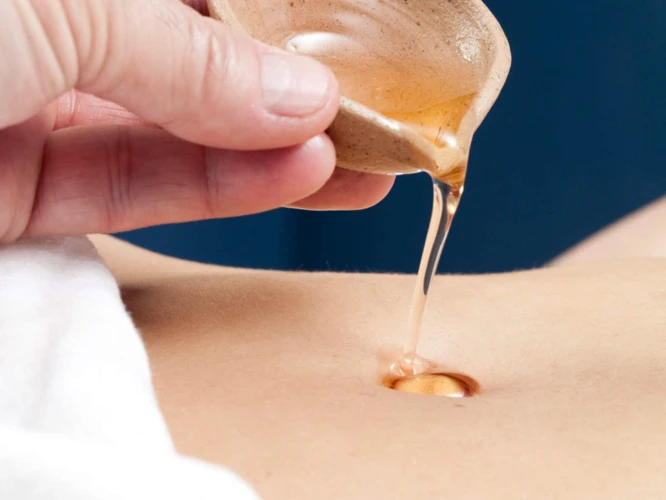
Massaging your belly button is an ancient healing practice that has been used for centuries to promote well-being and relaxation. It has been scientifically proven to provide a range of benefits, from relieving stress and anxiety to improving digestion and sleep. Here are some of the top benefits of massaging your belly button:
- Reduced stress and anxiety – Massaging your belly button helps to reduce stress and anxiety levels by stimulating relaxation response in the body.
- Improved digestion – Massaging your belly button can help improve digestion by stimulating the digestive muscles, allowing food to move through the stomach and intestines more easily.
- Better sleep – Massaging your belly button can help to relax the body and mind, improving the quality of your sleep.
- Improved immunity – By stimulating the lymphatic system, massaging your belly button can help to boost your immune system and reduce the risk of illness.
- Reduced pain – Massaging your belly button can help to reduce pain by stimulating the release of endorphins, which are the body’s natural painkillers.
With these amazing benefits, it’s no wonder why many people are turning to how to massage your belly button for relief and rejuvenation.
How to Prepare for a Belly Button Massage

Setting the stage for your belly button massage is just as important as the technique itself. The right oil and a peaceful atmosphere can enhance the experience and help your body fully relax.
🪔 Choose the Right Oil
Using a high-quality oil helps nourish the skin and allows your fingers to glide smoothly during the massage. Aim for oils that are:
🌿 Light and non-comedogenic
🌰 Cold-pressed and organic, such as:
- Almond oil
- Jojoba oil
- Coconut oil
🚫 Avoid mineral oils or petroleum-based products, as they can clog pores and increase the risk of irritation or infection around the navel area.
🌙 Create a Relaxing Atmosphere
A calming environment supports deeper relaxation and amplifies the benefits of the massage. Try the following:
🕯️ Dim the lights or light a candle
🎵 Play soft music or ambient sounds
🌬️ Use essential oils or incense for aromatherapy
🧺 Lie down on a comfortable surface with a towel under your back
The goal is to make this a mindful, rejuvenating self-care ritual—not just a quick routine.
Massage Techniques for Belly Button Healing
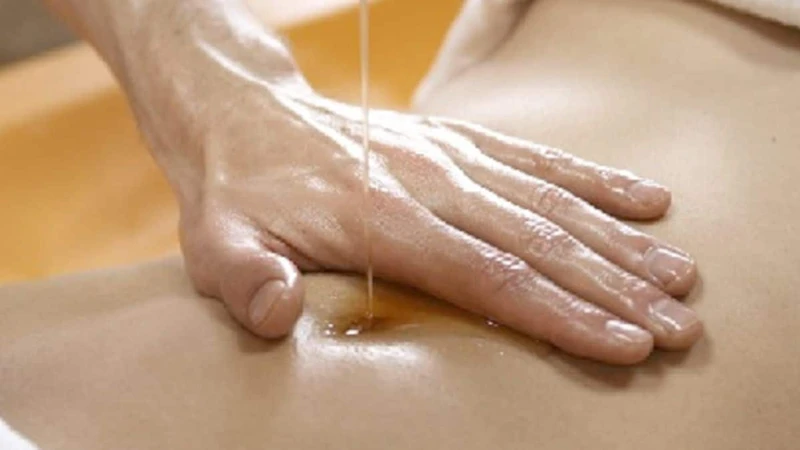
Once you’re relaxed and have chosen your oil, it’s time to begin the massage. These gentle techniques support relaxation, improve circulation, and help connect you to your core.
💡 Pro Tip: Always keep your pressure light and soothing. The belly button area contains sensitive nerve endings and is connected to deeper organs and tissues.
🤲 Step 1: Apply Gentle Pressure
Start by placing a few drops of your chosen oil on your fingertips and warming it between your hands. Then:
🫱 Rest your fingers lightly on the area around your belly button (not inside it).
💆♀️ Apply gentle, even pressure using two or three fingers.
💨 Focus on slow, deep breaths while pressing to encourage full-body relaxation.
This helps release tension in the abdominal wall and activates your parasympathetic nervous system (the “rest and digest” mode).
🔄 Step 2: Use Clockwise & Counter-Clockwise Motions
Next, stimulate blood flow and energy movement by rotating your fingers in gentle circles.
🕰️ Clockwise motions follow the path of your digestive tract and may help reduce bloating or support digestion.
↩️ Counter-clockwise motions can help release tension or support detox.
✅ Spend about 30 seconds in each direction, adjusting pressure to comfort.
🔵 Step 3: Make Slow Circular Strokes Around the Navel
Once the area is warmed up:
🌀 Use small circular motions around the navel, gradually expanding outward in a spiral.
🫧 Focus on smooth, continuous strokes to increase blood and lymph flow.
🧘 Aim for about 2–5 minutes of massage, depending on your comfort and goal.
You can end with a few deep breaths, resting your hands over your belly to absorb the warmth and effects.
Apply Pressure
Applying pressure to the belly button can help loosen up tight muscles and promote the release of tension. This can be done by using your fingertips to lightly press and massage the area around the belly button.
Rotate Clockwise or Counter-Clockwise
Gently rotating your fingertips around the belly button in either a clockwise or counter-clockwise direction can help relax the muscles and stimulate circulation.
Use Circular Motions
Using circular motions around the belly button can help increase blood flow and reduce inflammation. This can be done by using your fingertips to make small, circular motions around the belly button.
Additional Tips

- Use circular motions: Move your fingers in circles when massaging your belly button. This helps to improve circulation and can provide relaxation.
- Be gentle: Don’t press too hard when massaging your belly button. This can cause discomfort and even pain.
- Focus on the surrounding areas: Don’t forget to massage the surrounding areas of your belly button. You can even move your fingers to your lower abdomen.
- Use essential oils: Essential oils have healing properties and can help to improve the effects of your massage. Some essential oils that can be used include lavender, eucalyptus and peppermint.
- Take warm baths: Taking a warm bath can help to relax your muscles and improve your circulation. This can be a great way to end your massage session.
🚨 When to See a Doctor
Belly button massage is generally safe for most people when done gently. But if you have a medical condition or feel discomfort, it’s best to check with your doctor first.
You should contact a healthcare professional immediately if you experience any of the following:
🔴 Severe abdominal or navel pain
🦠 Signs of infection (warmth, redness, or swelling)
🌡️ Fever
🤢 Nausea or vomiting
💧 Unusual discharge from the navel
😣 Persistent itching or skin irritation
These symptoms may signal an underlying issue that requires medical attention. When in doubt, trust your body—and talk to your provider before continuing.
Frequently Asked Questions
🌿 What Are the Benefits of Massaging Your Belly Button?
Massaging your belly button may offer a surprising range of wellness benefits, including:
- Improved digestion and reduced bloating
- Better circulation and oxygen flow
- Stress and anxiety reduction
- Enhanced sleep quality
- Support for immune and organ function
- Potential reduction in cellulite appearance
- Improved mental clarity and mood balance
- Relief from mild cramping or constipation
While more clinical research is needed, many of these effects are supported by traditional wellness practices like Ayurveda and modern self-care routines.
✅ Is Massaging Your Belly Button Safe?
Yes — belly button massage is generally safe for most people when done correctly. Follow these precautions to ensure a safe experience:
🧼 Clean the area with mild soap and warm water before starting
🩺 Check for signs of infection (redness, discharge, or swelling)
🫱 Use gentle pressure — never force or press deeply
😌 Avoid pain — the massage should feel soothing, not uncomfortable
⏳ Limit frequency — avoid over-massaging the same area
If you have a medical condition or experience discomfort, consult your healthcare provider before continuing.
⏰ How Often Should You Massage Your Belly Button?
You can safely massage your belly button once a day, especially in the evening to promote relaxation. Daily practice may help:
- Support digestion
- Reduce inflammation
- Stimulate internal organs
- Relieve cramping and tension
- Encourage detoxification and circulation
If you’re dealing with high stress or digestive issues, you might benefit from more frequent sessions — but always check with your doctor if unsure.
🔄 What Techniques Should Be Used to Massage the Belly Button?
For best results, follow these simple, gentle techniques:
🌀 Use light, circular motions with your fingertips
🕰️ Massage in a clockwise direction for 1–2 minutes (to support digestion)
↩️ Follow with a counter-clockwise motion for balance
🤲 Apply firm but comfortable pressure, adjusting if you feel tension
🫧 Massage the surrounding abdomen and chest for full-body relaxation
The key is to stay present and avoid rushing — slow, mindful movements are most effective.
⚠️ What Should You Do If You Experience Discomfort While Massaging?
If you feel discomfort during belly button massage, follow these steps:
🔎 Stop immediately and check for signs of irritation or infection
🧘♀️ Take deep breaths and allow your body to relax
♻️ Adjust your technique — lighten the pressure or slow the movement
🌡️ Apply a warm compress to help soothe the area
📞 Seek medical advice if you notice swelling, redness, discharge, or persistent pain
Always listen to your body — discomfort is a sign to pause and reassess.
Conclusion
🌟 Final Thoughts
Belly button massage is a simple yet powerful self-care ritual that’s easy to incorporate into your wellness routine. Whether you’re looking to support digestion, reduce stress, or just reconnect with your body, this ancient practice may offer benefits beyond what you’d expect.
🛁 Ready to try it? Set aside a few quiet minutes this week and let your belly guide the way.
👉 Want more wellness rituals like this? Browse our self-care guides for hands-on techniques backed by tradition and science.
📖Read More:
📚References
🔗The Art of Belly Button Massage
🔗Ancient clinical application of massage therapy on navel – National Library of Medicine
🔗Does the Pechoti Method Work? – Healthline
⚠️ Disclaimer:
This article is for informational purposes only and does not constitute medical advice. Always consult with a licensed healthcare provider or certified massage therapist before beginning any new treatment, especially if you have pre-existing health conditions or concerns.

